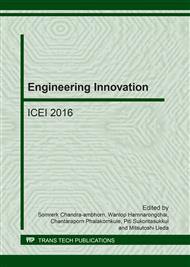[1]
G.C. Bond, D.T. Thompson, Catalysis reviews, Sci Eng Ethics. 41 (1999) 319–388.
Google Scholar
[2]
T. You, O. Niwa, M. Tomita, S. Hirono, Characterization of platinum nanoparticle-embedded carbon film electrode and its detection of hydrogen peroxide, Anal Chem. 75 (2003) 2080–(2085).
DOI: 10.1021/ac026337w
Google Scholar
[3]
J.R. Weissmueller, N. Viswanath, D. Kramer, P. Zimmer, R. Wuerschum, H. Gleiter, Charge-induced reversible strain in a metal, Science. 300 (2003) 312–315.
DOI: 10.1002/chin.200329012
Google Scholar
[4]
S.H. Joo, S.J. Choi, K.J. Kwa, Z. Liu, O. Terasaki, R. Ryoo, Ordered nanoporous arrays of carbon supporting high dispersions of platinum nanoparticles, Nature. 412 (2001) 169–172.
DOI: 10.1038/35084046
Google Scholar
[5]
C. Perego, R. Millini, Porous materials in catalysis: challenges for mesoporous materials. Chem Soc. 42 (2013) 3956-3976.
DOI: 10.1039/c2cs35244c
Google Scholar
[6]
W.B. Liu, S.C. Zhang, N. Li, J.W. Zheng, Y.L. Xing, A facile one-pot route to fabricate nanoporous copper with controlled hierarchical pore size distributions through chemical dealloying of Al–Cu alloys in an alkaline solution. Micropor Mesopor Mat. 138 (2011).
DOI: 10.1016/j.micromeso.2010.10.003
Google Scholar
[7]
O. Okman, J.W. Kysar, Fabrication of crack-free blanket nanoporous gold thin films by galvanostatic dealloying, J Alloy Compd. 509 (2011) 6374–6381.
DOI: 10.1016/j.jallcom.2011.02.115
Google Scholar
[8]
S.L. Zhu, J.L. He, X.J. Yang, Z.D. Cui, L.L. Pi, Ti oxide nano- porous surface structure prepared by dealloying of Ti–Cu amorphous alloys, Electrochem Commun. 13 (2011) 250–253.
DOI: 10.1016/j.elecom.2010.12.025
Google Scholar
[9]
Q. Zhang, X. Wang, Z. Qi, Y. Wang, Z. Zhang, A benign route to fabricate nanoporous gold through electrochemical dealloying of Al–Au alloys in a neutral solution, Electrochim Acta. 54 (2009) 6190–6198.
DOI: 10.1016/j.electacta.2009.05.089
Google Scholar
[10]
C. Zhao, X. Wang, Z. Qi, H. Ji, Z. Zhang, On the electrochemical dealloying of Mg–Cu alloys in a NaCl aqueous solution, Corros Sci. 52 (2010) 3962–3972.
DOI: 10.1016/j.corsci.2010.08.005
Google Scholar
[11]
H.J. Qiu, L. Peng, X. Li, H.T. Xu, Y. Wang, Using corrosion to fabricate various nanoporous metal structures, Corros Sci. 92 (2015) 16–31.
DOI: 10.1016/j.corsci.2014.12.017
Google Scholar
[12]
S. Van Petegem, S. Brandstetter, R. Maass, A.M. Hodge, B.S. El-Dasher, J. Biener, B. Schmitt, C. Borca, H. V. Swygenhoven, The microstructure of nanoporous gold: an x-ray diffraction study, Nano Lett. 9 (2009) 1158–1163.
DOI: 10.1021/nl803799q
Google Scholar
[13]
L.H. Qian, M.W. Chen, Ultrafine nanoporous gold by low-temperature dealloying and kinetics of nanopore formation, Appl Phys Lett. 91 (2007) 083105.
DOI: 10.1063/1.2773757
Google Scholar
[14]
M.L. Free, Hydrometallurgy: Fundamentals and Applications, John Wiley & Sons Inc., New Jersey, (2013).
Google Scholar


